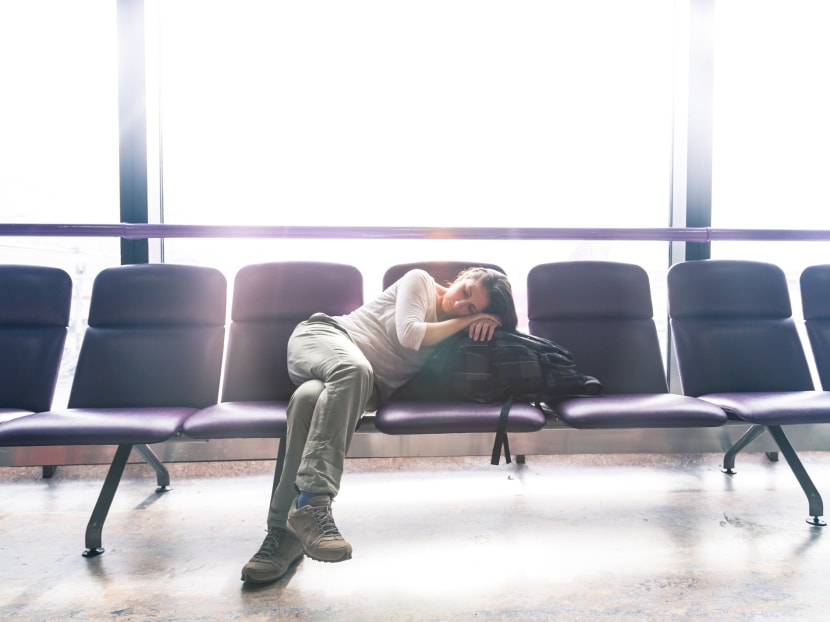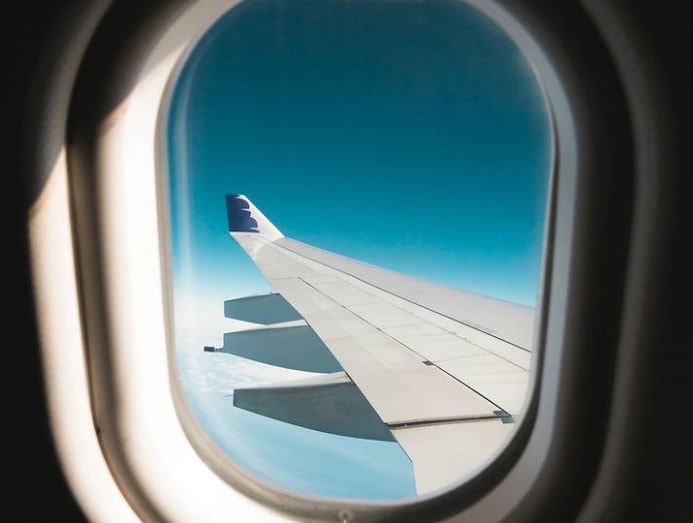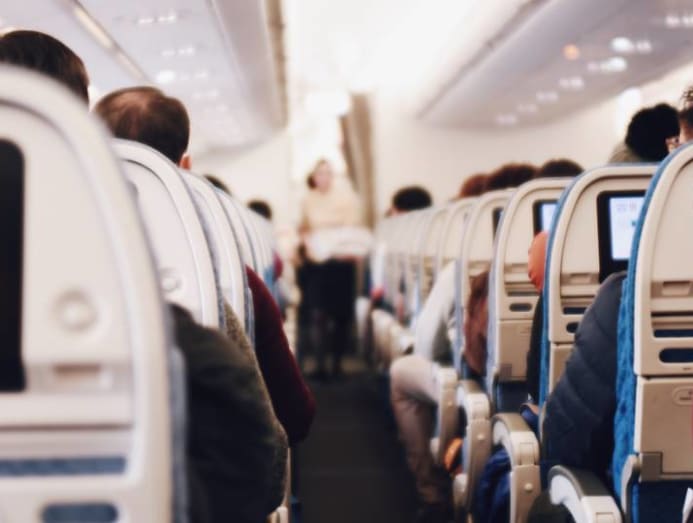Travel well: How to avoid jet lag, flatulence and dehydration on long flights
With non-stop flights going farther and flying longer, CNA Lifestyle finds out from the experts what you can do to stay healthy on the way to your next big adventure.

(Photo: iStock/TommasoT)
Last year, Singapore Airlines clocked in the world’s longest flight with its 18-hour trip from New York to the Lion City. And now, Qantas also has plans for its own long-distance flights, with several trial flights.
While the experts are collating the information from these flights, ending in December, to better improve wellbeing and comfort on long-haul flights, CNA Lifestyle finds out from aviation medicine experts what happens when you subject your body to the effects of a high-pressure chamber at high altitudes for long stretches.
Here’s what we found out.
READ: The Snorer, the Stinker and the Seat Kicker – 10 worst people to be seated with on a plane
BE PREPARED FOR VERY BAD JET LEG
The jet lag, for one, will be significant, said Dr Brian See, director of the Changi Aviation Medicine Centre at Changi General Hospital.
Jet lag is most noticeable in flights crossing four or more time zones, according to the Aerospace Medical Association. And Sydney is 15 time zones ahead of New York.

“Additionally, eastward travel from Sydney to New York will be more challenging to adjust to, compared with westward travel from New York to Sydney,” said Dr See.
“This is because the human body copes poorer with the shortening of a day and bedtime advancement, compared to the lengthening of a day with added hours of daylight and delay of bedtime.”
If you're flying from Singapore to the Big Apple, the direction of travel is westward instead. But the same principle to jet lag applies.
What to do: Have a well-established, pre-sleep routine at home, said Dr See, and stick to it even when you’re on the plane and after arriving at your destination.
To help you fall asleep better, keep the environment as quiet, dark and comfortable as possible, and avoid caffeine and a large meal a few hours before bedtime, he advised.
“Although alcohol may appear useful for initiating sleep, it disrupts the usual sleep pattern required for restful sleep and should therefore be avoided.”

If you’re attending an important meeting or taking an examination, and really need to rest on the plane, consider consulting a doctor for “a short course of short-acting, sleep-promoting medication,” said Dr See.
Regulating your mealtimes after touching down can also help improve jet lag – and may be even better than sleep, according to research by the University of Surrey.
The study, published in the journal Psychology And Health in 2016, found that eating at mealtimes of their travel destination helped long-haul crew members adapt their body clocks better during their off days.
DRINK MORE WATER – YOU’LL NEED TO BE HYDRATED
You’re probably spared dehydration on flights that are three or four hours long, said Dr Peter Hackett, director of the Institute For Altitude Medicine on Conde Nast Traveler.
But long-haul flights are a different scenario. Compared to Singapore’s average annual relative humidity of 83.9 per cent, the cabin’s less than 20 per cent humidity (according to the World Health Organization or WHO) is like being in the desert.
READ: Flying long-haul with your kids? Here’s how to make the best of your trip
You may not be aware of the dehydration as the plane’s interior is often freezing cold but it is happening. By the time you start to feel signs such as irritability, fatigue and an increasing inability to focus on a movie or book, dehydration has already set in.
What to do: The Aerospace Medical Association suggests drinking about 240ml (8oz) of water for every hour in the plane. For reference, most plastic cups used by airlines hold about 270ml (9oz) of liquid.
And if you can’t miss the merlot, a 240ml drink of water should be enough to counteract the dehydrating effect of one glass of wine, said Dr Hackett.
Do you still need to drink so much water on planes such as the Dreamliner 787 or the Airbus A350, which boast a cabin humidity of about 25 per cent? Well, yes.
While the new-generation aircrafts make for a more comfortable ride, hydration isn’t exactly aviation engineers’ top priority, and you should still drink enough water to feel the need to visit the toilet often, said Dr Clayton Cowl, chair of the Division Of Preventive, Occupational, and Aerospace Medicine at the Mayo Clinic.
TRY TO GET UP AND WALK MORE
It’s not just grandmas and grandpas who are prone to deep vein thrombosis (DVT). As long as you’re seated for long periods, be it flight, rail or other forms of travel, the risk is there.
In fact, your risk approximately doubles after a long-haul flight of more than four hours, said Dr See, citing research conducted by the WHO.
The risk of DVT is further increased among individuals with other known risk factors, such as obesity, use of oral contraceptives and the presence of certain blood abnormalities, said Dr See.
What to do: All long-haul air travel passengers should carry out regular leg exercises while seated, as well as walk along the aisle from time to time, advised Dr See.
GO TO THE TOILET REGULARLYIf your digestive system isn’t usually too happy to be on the plane with you on normal flights, it’s going to be worse on a long-haul one.
According to Dr Megan Rossi, a researcher in gut health at King’s College London, any air that is trapped in your gastrointestinal tract will expand and put pressure on it. This air can come from breathing, swallowing and food that gets fermented in the colon three to six hours after eating, she said.
What to do: “Avoid going to the toilet and you’ll cause air to expand more and lead to pains in the stomach,” said Dr Rossi, who definitely recommended going to the toilet often.
What you eat can also determine gas formation in your gut. “The fructose in fruit can be gas-forming, so try to stick to one portion both up in the air and 24 hours before,” said Dr Rossi.
Dr See suggested giving gas-promoting foods such as legumes and cruciferous vegetables, as well as carbonated drinks and larger-than-usual meals in the air, a miss.
READ: Ladies, travelling solo is a true luxury – here's how to keep yourself safe
For diabetic travellers who are on insulin or those on certain medication that can cause low blood sugar levels, it is advisable to consult their doctors before travelling, said Dr See.
WASH YOUR HANDS – BUT THERE’S NO NEED TO WEAR A MASK
Contrary to popular belief, the re-circulated air in the plane’s cabin rarely spreads respiratory infections such as the common cold, said Dr See.
“When they do occur, the spread is almost always through direct close contact with a symptomatic passenger. This is similar to situations on the ground, and is not unique to an aircraft cabin environment. There is no evidence that recirculated aircraft cabin air increases the risk of transmission.”
Furthermore, said Dr See, high-efficiency particulate air (HEPA) filters are now fitted to the air-conditioning systems of most modern passenger aircraft, and “will filter out almost all bacteria and virus particles from the recirculated cabin air”.
What to do: The same measures that you take on the ground – such as washing your hands often, washing them before meals and after using the toilet, and not touching your face with unwashed hands – apply in the air, said Dr See.
“Those who are already unwell with symptoms suggestive of respiratory infection should ideally defer their travel until they recover,” he said.





